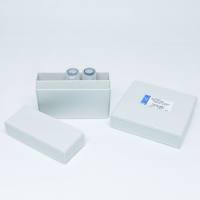The Role of Cardiac Pacemaker Currents in Antiarrhythmic Drug Discovery
From even the most basic physiological observations, it is obvious that parts of the heart can generate their own intrinsic contractile rhythm. With the development of techniques to record electrical activity from tissues, it became clear that contraction of the heart is triggered by an action potential and that most areas of the heart can, under some circumstances, generate rhythmic action potentials, although it is cells in the sinoatrial node (SAN) that have the highest intrinsic frequency, and hence it is these cells that normally provide the drive for the rest of the heart. Even a single, isolated SAN cell will generate rhythmic action potentials separated by a period of slow diastolic depolarization. It is the diastolic depolarization that repeatedly drives the membrane potential towards threshold for action potential firing. The mechanism underlying this diastolic depolarization has been a subject of much puzzlement. By the 1970s, it was clear that to provide a slow depolarization, there must be a slow increase in net inward current, although it was not clear whether this came about as a consequence of the slow inactivation of an outward current (presumed to be a carried by potassium) or the slow activation of an inward current (1 ). Using the intracellular recording and voltage clamp techniques available at the time, it was difficult to resolve the different components of the current flowing during the diastolic depolarization (2 –4 ). With the advent of patch-clamp techniques, coupled with techniques for preparation of isolated cells from various parts of the heart, resolution of individual currents became possible. The mechanism of the diastolic depolarization was greatly clarified by the discovery in pacemaker cells of an inward current that was activated by hyperpolarization (5 –8 ).
![预览]()






